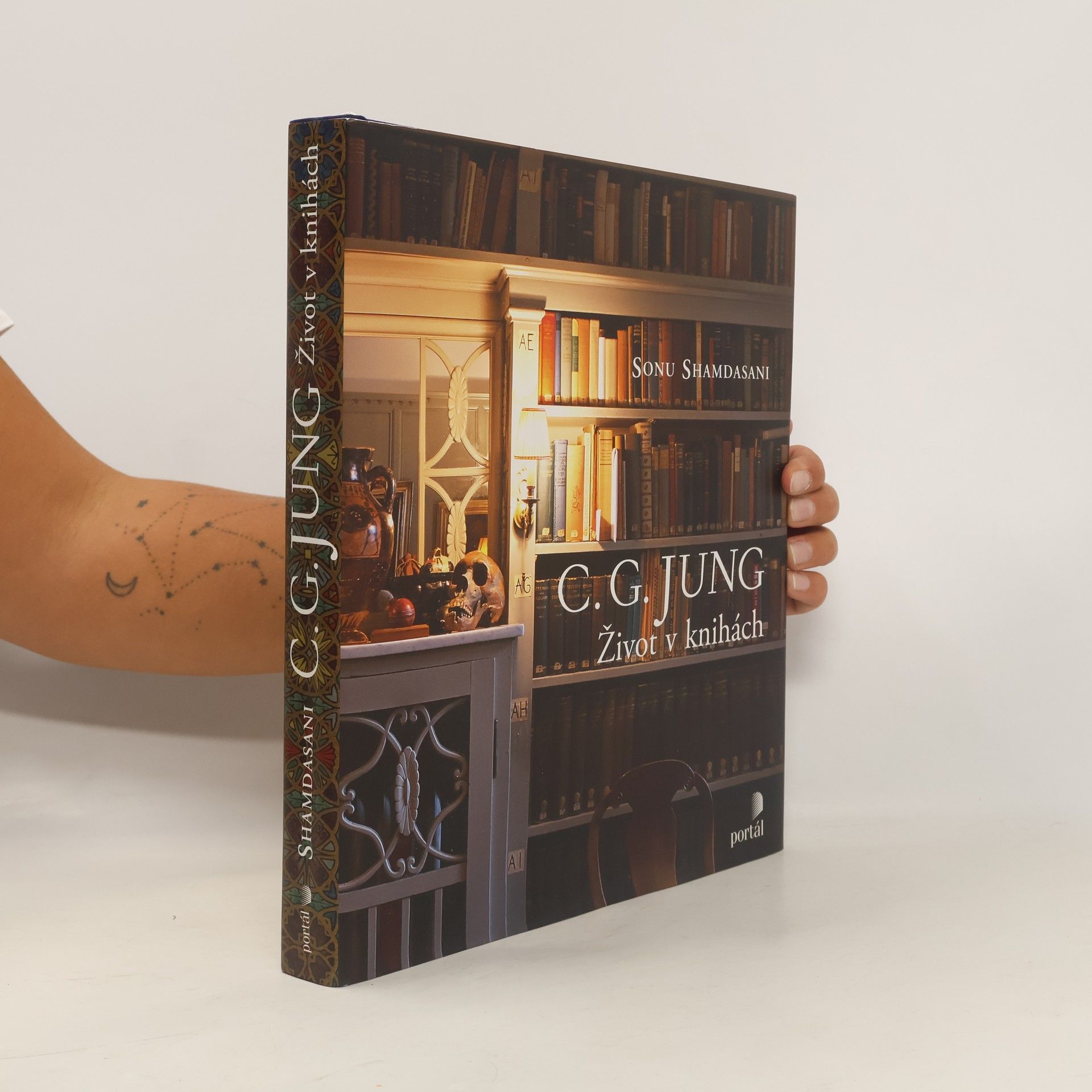Inhaltsübersicht: Vorwort zur deutschen Ausgabe, Vorwort des Hrsg. der amerikan. Ausgabe, Danksagung, Seminarteilnehmer, Abkürzungsverzeichnis, Einführung: Jungs Reise nach dem Osten (von Sonu Shamdasani), Die Seminarsitzungen (1. bis 4.), Anhang: 1. Indische Parallelen, 2. Jungs Kommentare in Hauers deutschen Vorlesungen, 3. Hauers englische Vorlelsung, 4. Sat-Chakra-Nirupana, Bildnachweis, Register
Sonu Shamdasani Bücher







Als geheimnisvolles ”Rotes Buch“ ging es in die Literatur über C. G. Jung ein. Niemand bekam es zu Gesicht, da sein Urheber selbst verfügt hatte, es nicht zu veröffentlichen. Diesem Wunsch wurde entsprochen. Doch fast fünfzig Jahre nach dem Tod Jungs ist die Zeit gekommen, um dieses eindrucksvolle Werk der Öffentlichkeit zugänglich zu machen. Über viele Jahre hielt der große Schweizer Tiefenpsychologe C. G. Jung (1875-1961) seine Träume, Visionen und Fantasien in einem Tagebuch fest: großformatig, kunstvoll und farbenprächtig - C. G. Jungs handgeschriebenes und -gemaltes einzigartiges Vermächtnis. (Quelle: Verlagsinfo).
Nářek mrtvých
- 264 Seiten
- 10 Lesestunden
Rozhovor dvou předních současných světových psychologů, Jamese Hillmana, zakladatele hnutí archetypální psychologie, a editora Jungovy Červené knihy a historika psychologie Sonu Shamdasaniho, se odehrává na pozadí vydání Červené knihy a prochází tématy, která jsou důležitá pro moderní psychologii. Dotýká se vztahu živých a mrtvých, vztahu k mrtvým a živým v našich snech a fantaziích, otázek kreativity a výtvarného vyjádření, psychologie umění, narativní psychologie, hlubinné psychologie, významu křesťanství pro moderního člověka, vztahu člověka k minulosti a jejich souvislostí s dnešním myšlením.
Kundaliní jóga a hlubinná psychologie : curyšské semináře z roku 1932
- 160 Seiten
- 6 Lesestunden
Semináře o kundaliní józe, které Carl Gustav Jung přednesl v roce 1932 v Curychu, jsou považovány za klíčové pro psychologické chápání východního myšlení a transformace vnitřní zkušenosti. Jung v nich našel model pro vývoj vyššího vědomí a interpretoval jeho symboliku v kontextu individuačního procesu. Redaktor Sonu Shamdasani spojil Jungovy přednášky s diskusemi účastníků, čímž přiblížil fascinaci intelektuálů předválečné Evropy východní spiritualitou, která se odhalovala s každým novým překladem jógických a tantrických textů. Shamdasani zrekonstruoval semináře na základě nových dokumentů a vysvětluje, proč Jung považoval porozumění východnímu myšlení za klíčové pro rozvoj západní psychologie. Zároveň se zaměřuje na otázky, které trápily nejen Junga, ale i účastníky: Jaký je vztah mezi východními náboženskými školami a západní psychoterapií? Existuje spojitost mezi esoterickými tradicemi a osobními prožitky? Jak mohou symboly kundaliní jógy osvětlit psychózy? Tyto otázky jsou relevantní i pro současné čtenáře. Kniha rovněž obsahuje nový materiál z Jungových seminářů, přednášky indologa Wilhelma Hauera, ilustrace čaker a klasický překlad tantrického díla Šatčakranirúpana od Johna Woodroffa.
Čtyři roky po vydání Jungovy Červené knihy vydalo nakladatelství Norton obsáhlý ilustrovaný komentář k Jungově životopisu na pozadí jeho četby. Kniha vychází z unikátních dosud nezveřejněných Jungových rukopisů a z faksimile knih z Jungovy knihovny, které zakladatele hlubinné psychologie provázely po celý jeho tvůrčí život a které mu byly inspirací při promýšlení psychologických a filozofických koncepcí. Znovu se setkáme s ukázkami z tzv. Černých knih a z Červené knihy, s knihami, které Junga vedly ke studiu nevědomí, s texty gnostickými a alchimistickými i s klasickými rukopisy orientální moudrosti. Roku 1912 si Jung o své četbě poznamenal: „Kdyby se snad stalo, že by všechny tradice světa zmizely jako mávnutím proutku, celou mytologii a historii náboženství by znovu vytvořily nové generace.“ Sonu Shamdasani (1962) je editorem Jungovy Červené knihy (Portál, 2009), autorem několika biografických prací o C. G. Jungovi. Působí v Londýně, kde na několika univerzitách přednáší dějiny psychologie.
Kultowe fikcje C.G. Jung i jego projekt...
- 216 Seiten
- 8 Lesestunden
Kultowe fikcje podążają ścieżką, która doprowadziła Junga do założenia w 1916 w Zurychu Klubu Psychologicznego. Jej autor, Sonu Shamdasani, wybitny badacz dzieła i życia Junga, przypomina i analizuje kontrowersje, jakie wzbudziło tamto wydarzenie, oraz pokazuje, w jaki sposób zwolennicy Junga przyczynili się do zmiany formuły jego projektu. Przytacza dowody świadczące przeciwko temu, że, zgodnie z wysuwanymi przez niektórych oskarżeniom, Klub Psychologiczny był w istocie, wbrew swojej nazwie, rodzajem kultu założonego przez Junga w celu swojej własnej deifikacji. W książce publikowane są po raz pierwszy nieznane dotąd, a mające kluczowe znaczenie dla całej sprawy dokumenty sporządzone przez Junga i dotyczące jego osoby. Dzięki wykonanej przez autora niezwykle wnikliwej pracy detektywistycznej możemy się przekonać, że wysuwane pod adresem Junga oskarżenia są bezpodstawne wynikają z błędnej oceny jego postępowania oraz przypisywania mu intencji, których on sam nigdy nie przejawiał. Kultowe fikcje wyjaśniają narosłe nieporozumienia, ukazując w jasnym świetle prawdziwe cele i zamierzenia Junga odnoszące się do psychologii analitycznej. Jest to lektura obowiązkowa dla każdego, kto śledzi toczącą się w ostatnich latach debatę na temat legitymizacji psychologii analitycznej oraz nowych ruchów religijnych, poruszająca również kwestie dotyczące instytucjonalizacji psychoterapii w ogólności. Kultowe fikcje zdobyły nagrodę Gradiva Prize za najlepszą książkę historyczną i biograficzną przyznawaną przez World Association for the Advancement of Psychoanalysis.